A Travel Guide to Lisbon in Every Season

A Seasonal Travel Guide to Lisbon, Portugal’s Charming Capital
Are you searching for a best time to visit Lisbon? this seasonal travel guide to Lisbon presented the features of each seasonal activities in Lisbon for you to choose from.
Lisbon, the enchanting capital of Portugal and often called the “City of Seven Hills,” is renowned for its rich history, vibrant culture, and stunning natural beauty. Each season casts a unique spell over this city, offering visitors an ever-changing yet consistently captivating experience. Whether you’re planning a trip to Portugal or seeking a detailed travel guide to Lisbon, this article will guide you through the seasonal charms of this vibrant city.
With year-round temperatures ranging from 8°C to 29°C, Lisbon boasts a mild climate compared to many other European destinations. While spring and autumn are widely considered the best times to visit Lisbon, summer and winter each hold their own allure and distinct advantages. Here’s a seasonal breakdown to help you decide when to visit and what to experience.
Visit Lisbon in Spring (March to May): A Nature Lover’s Paradise
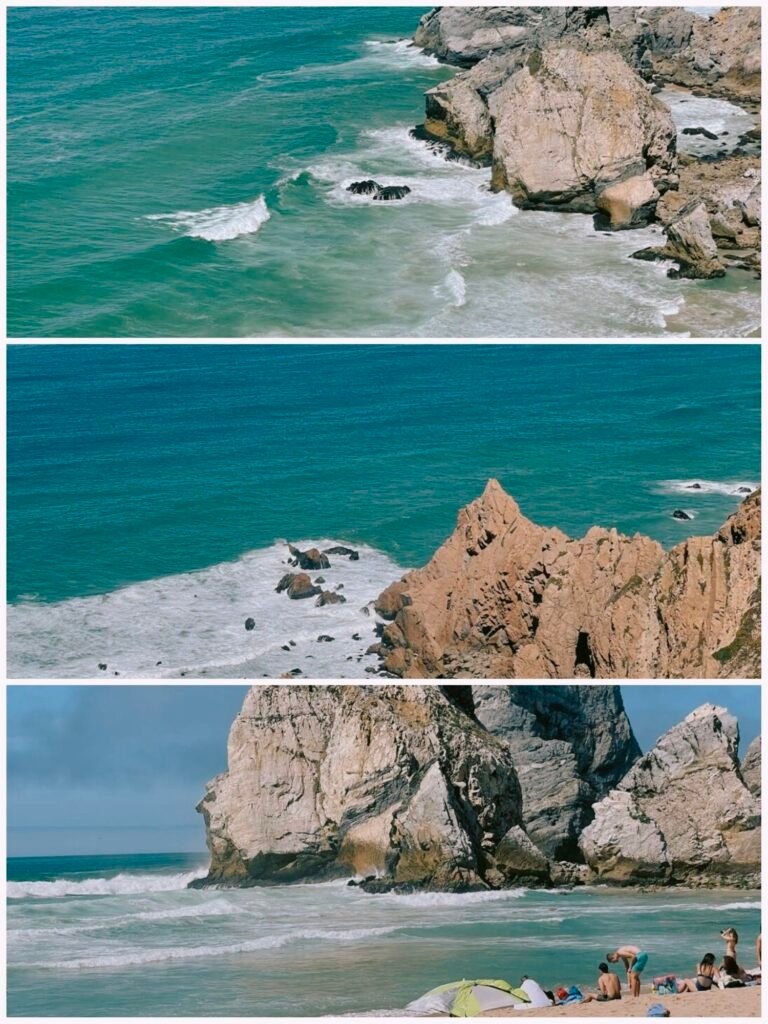
Climate and Scenery
If you’re a nature enthusiast or love exploring on foot, spring is arguably the best time to visit Lisbon. From March to May, the city enjoys warm sunshine and temperatures ranging between 15°C and 20°C during the day, making it ideal for outdoor adventures. Stroll through Lisbon’s historic streets adorned with blooming flowers, or relax in lush parks shaded by greenery. The lively café terraces and open-air restaurants begin to buzz with life, creating the perfect atmosphere for a laid-back holiday.
Recommended Historical Activities
In general, there aren’t many tourists in March, but by May, the number of visitors gradually increases. If you plan to go during that time, it’s important to book hotels and tours in advance. (travel guide to Lisbon)
- Explore Alfama and São Jorge Castle: Begin your day wandering through the narrow streets of Alfama, Lisbon’s oldest district. Make your way to São Jorge Castle for panoramic views of the city and immerse yourself in its historic charm.

More about Sao Jorge Castle:
It is located on the highest hill in Lisbon, Portugal’s capital, is one of the city’s most iconic landmarks. Its history dates back to the 1st century BC, when it was occupied by various civilizations, including the Phoenicians, Carthaginians, Romans, and Moors, before being conquered by the Portuguese in the 12th century. Originally built in the 5th century by the Visigoths, the castle was later reconstructed and fortified by the Moors in the 11th century, transforming it into a defensive stronghold. Its design takes full advantage of the natural terrain, situated at a difficult-to-reach mountaintop and utilizing the natural slopes to the north and west. The castle features 11 towers.
After Lisbon was conquered by King Afonso I of Portugal in 1147, the castle entered its golden age as a royal palace, serving as the residence of the Portuguese monarchy and hosting various celebrations and coronation ceremonies. However, following Portugal’s incorporation into the Spanish crown in 1580, the castle’s role gradually shifted toward military use, and it suffered significant damage during the Lisbon earthquake of 1755.
From 1938 to 1940, the castle underwent extensive restoration and reopened to the public, reclaiming its former grandeur. Today, it is not only one of Lisbon’s main tourist attractions but also houses a museum, archaeological sites, viewing platforms, and more. The Castle of São Jorge stands as a testament to Lisbon’s historical evolution and is an important site for understanding Portugal’s cultural heritage. The castle is open to the public seven days a week. (travel guide to Lisbon)
Recommended Scenic Activities
- Walk through Baixa and Chiado: Continue to Baixa and Chiado, where you can explore traditional shops, modern boutiques, and iconic landmarks. Take a break at a café to enjoy a pastel de nata (custard tart) paired with a strong Portuguese espresso.
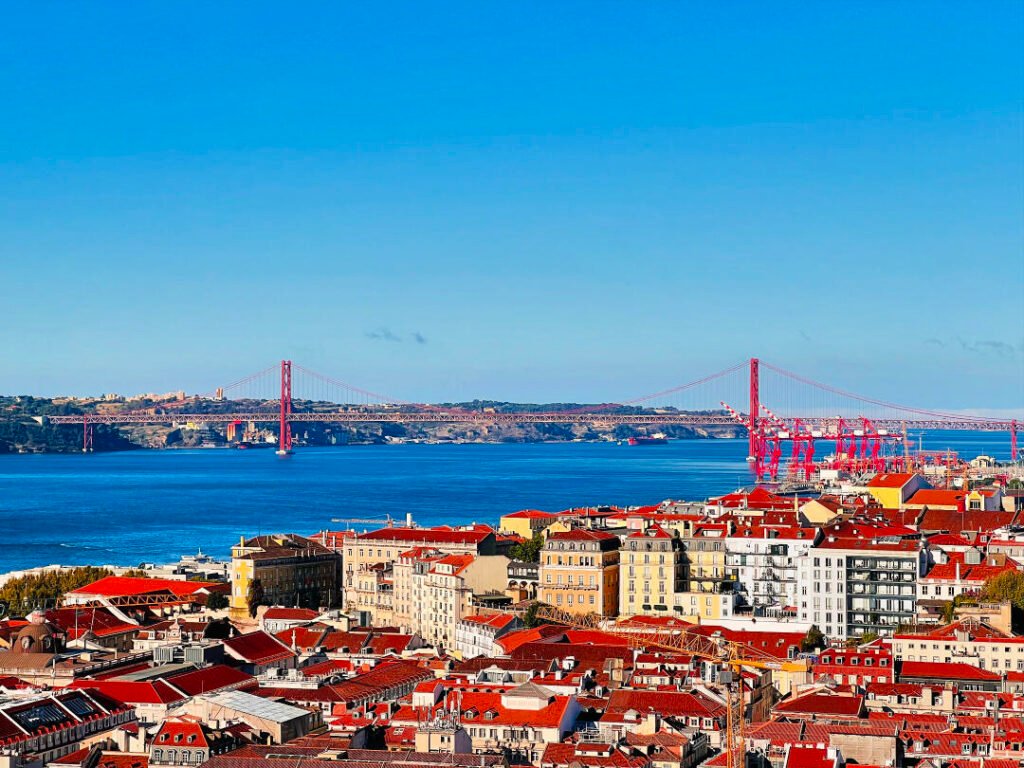
More about Baixa:
In addition, there is a high point where you can enjoy a stunning view of the entire city of Lisbon. First, walk to Praça do Comércio, passing through a landmark called Arco da Rua Augusta. The Arco da Rua Augusta is an iconic structure located on the northern side of Praça do Comércio, serving as the main entrance to the Baixa district. This triumphal arch not only symbolizes Lisbon’s reconstruction after the devastating earthquake of 1755 but also showcases the city’s rich history and culture.
You can choose to ascend to the top of the Arco da Rua Augusta, where you can enjoy a 360-degree view of Lisbon. While this perspective may not be as spectacular as some other viewpoints, it still offers a unique panorama of the city. To reach the top, you first take an elevator and then climb a long, narrow staircase. The elevator fare is about €4.50, but visitors with a Lisbon Card can use it for free.
Walking past the Arco da Rua Augusta, you will arrive at Praça do Comércio, one of the most famous squares in Lisbon, surrounded by yellow buildings and white columns. This area is filled with various shops, cafés, and restaurants, and hosts a variety of art exhibitions and street performances. Here, you can buy souvenirs, taste traditional Portuguese desserts like Pastel de Nata, and enjoy international cuisine. Just across the street is the Lisbon Story Center, where you can explore the city’s thousand-year history.
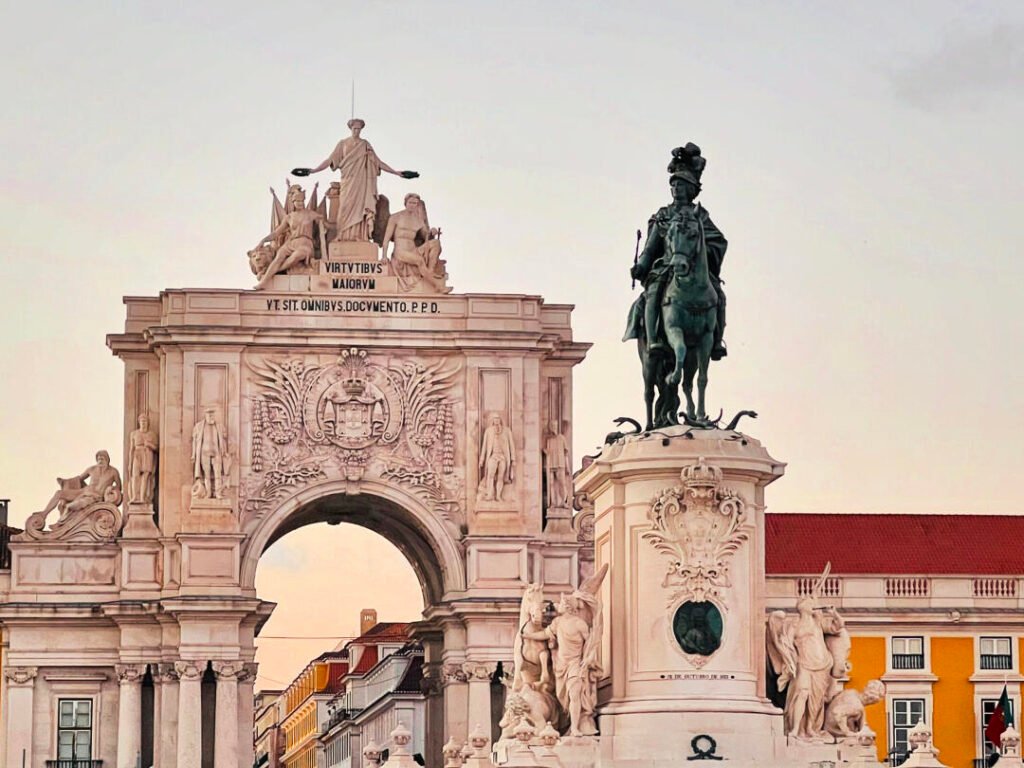
Recommended Festive Activities
- Seasonal Highlights: In May, don’t miss the annual “Jardins Abertos” (Open Gardens Festival), where private gardens and green spaces open their doors to visitors.
If you have more spared time in Lisbon, another route of scenic walks is also a perfect choice for first-timer to explore the local life, immersing yourself in a leisurely spring stroll.
For a scenic spring route, start in Belém and visit the Belém Tower, Jerónimos Monastery, and the Monument to the Discoveries. End your day at Eduardo VII Park, where lush gardens bloom in spring, offering a picturesque backdrop for your photos.
Food Experiences
Spring is also the season for Lisbon’s food festivals, such as the Lisbon Food Festival in April and the Alfama Food Festival in May. In addition to the two most renowned food festivals, there are also seafood, wine, and dessert festivals.
Most most most important thing is to try bacalhau, Portugal’s beloved salted codfish dish; besides, enjoy the vibrant atmosphere of local markets like Mercado da Ribeira would be a wonderful culinery experience.
Travel Lisbon in Summer (June to August): Beach Vibes and Festive Energy
Climate and Scenery
Summer in Lisbon is warm and sunny, with temperatures often reaching 28°C. This is peak tourist season, and the city comes alive with a vibrant, festive atmosphere. The warm weather is perfect for hitting the beaches or enjoying Lisbon’s famous nightlife.(travel guide to Lisbon)
If you enjoy the lively summer party atmosphere of bustling beaches, this is definitely the place for you, especially if you plan additional beach getaways nearby—it’s perfect for beach lovers!
Recommended Activities
- Beach Escapes: Head to the coastal town of Cascais, just a short train ride from Lisbon, for pristine beaches and seaside dining. Don’t miss the dramatic cliffs and breathtaking views at Cabo da Roca, the westernmost point of mainland Europe.
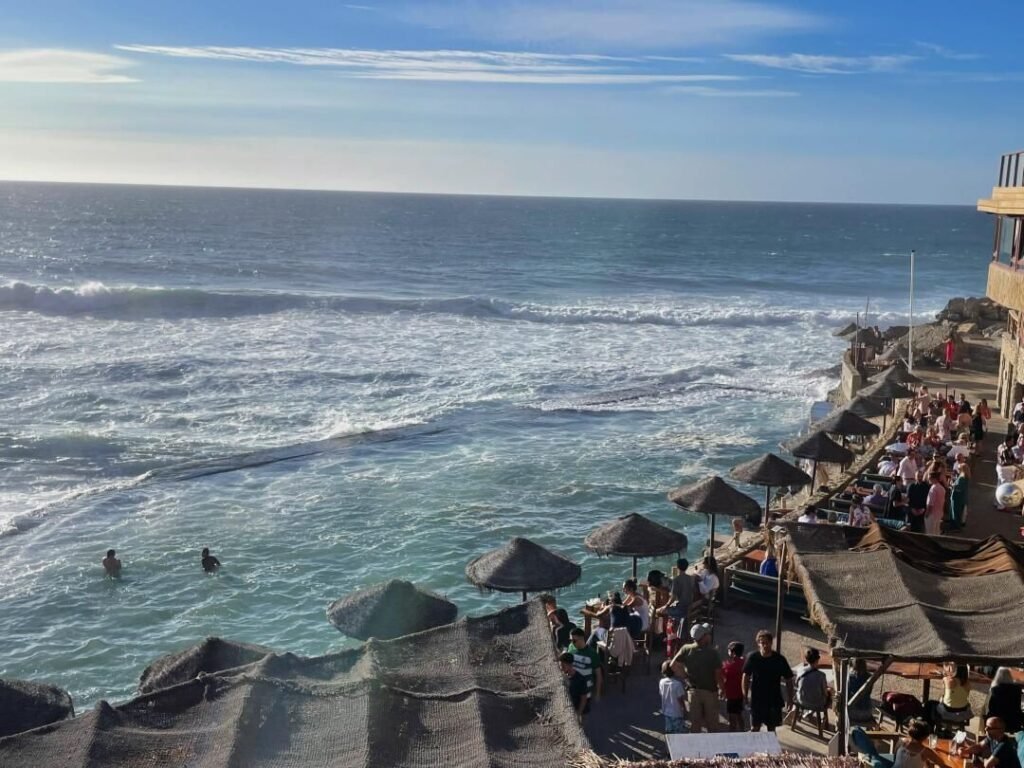
- Music Festivals: Summer is a prime time for music lovers, with festivals like NOS Alive, one of Europe’s best music festivals, featuring top international acts.
- City Sights: Spend a day exploring Lisbon’s iconic landmarks, including the Belém Tower, Jerónimos Monastery, and Castelo de São Jorge,the castle offers a stunning panoramic view of the entire city of Lisbon, making it a great spot to take in the city’s landscape.These UNESCO World Heritage sites are a must for any travel guide to Lisbon.

More about Cascais :
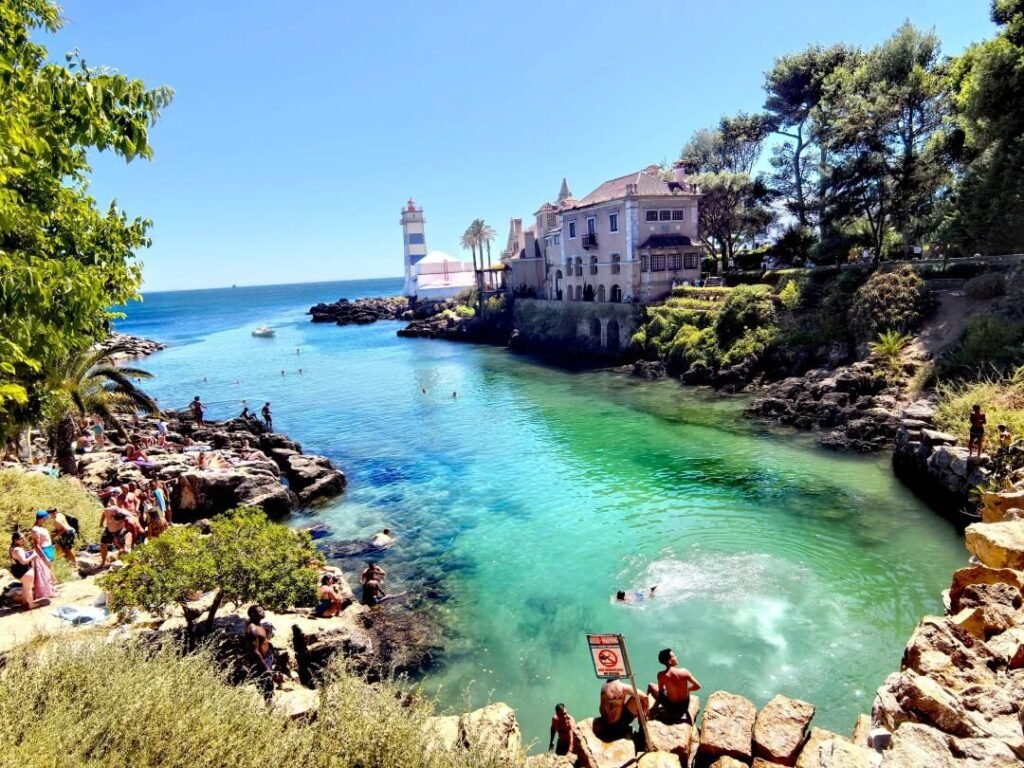

Cascais was once a summer retreat for Portuguese nobility and royalty, particularly during the late 19th and early 20th centuries, attracting many members of European royal families. Today, it retains many historical sites and cultural attractions.
- Cidadela de Cascais: This fortress, built in the 15th century, was originally a defensive structure and now partly serves as a museum and luxury hotel.
- Museu Condes de Castro Guimarães: Housed in a 19th-century palace, this museum showcases the life of the Portuguese aristocracy.
- Farol de Santa Marta Lighthouse Museum: Built in 1868, this lighthouse was converted into a museum in 2006, displaying important equipment related to navigation and warning signals.
Cascais is renowned for its beautiful beaches, which are perfect for water sports such as surfing, windsurfing, kitesurfing, and sailing. Among these, Praia do Guincho is a paradise for surfers and kite surfers. There are also natural wonders like Boca do Inferno.
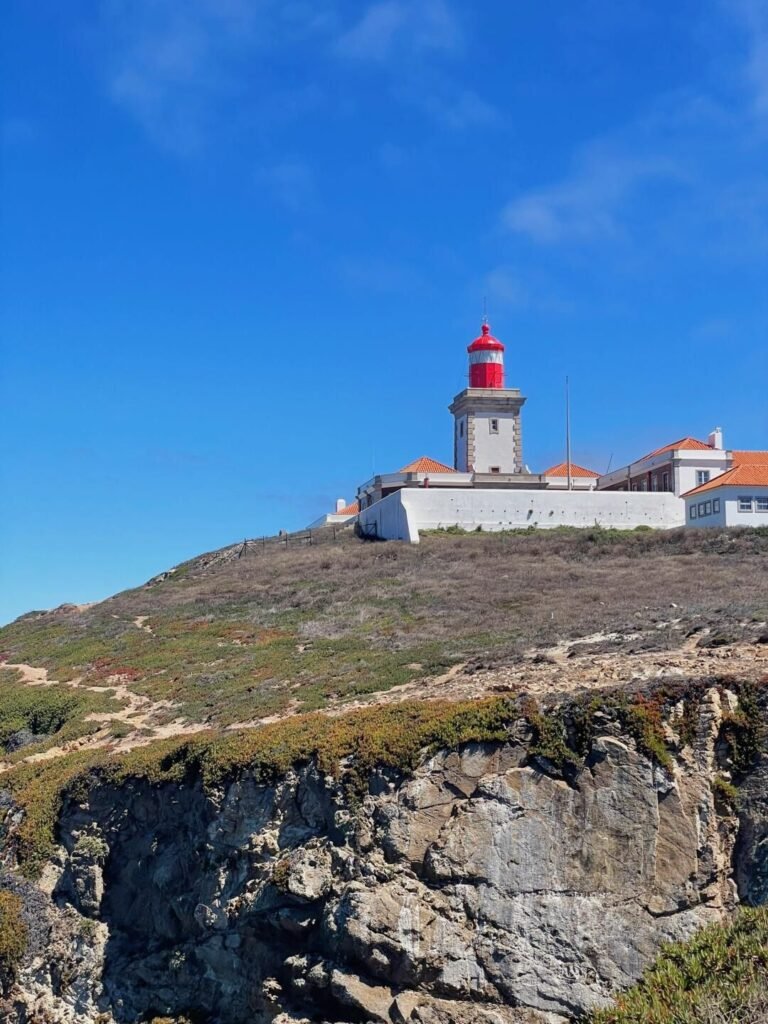
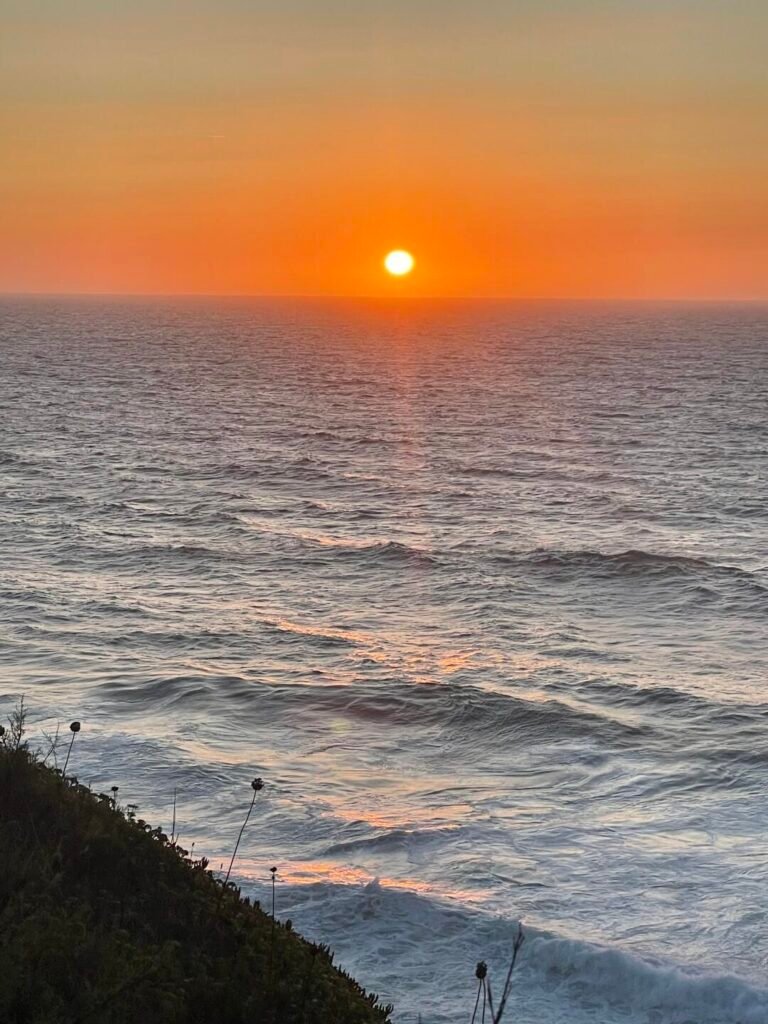
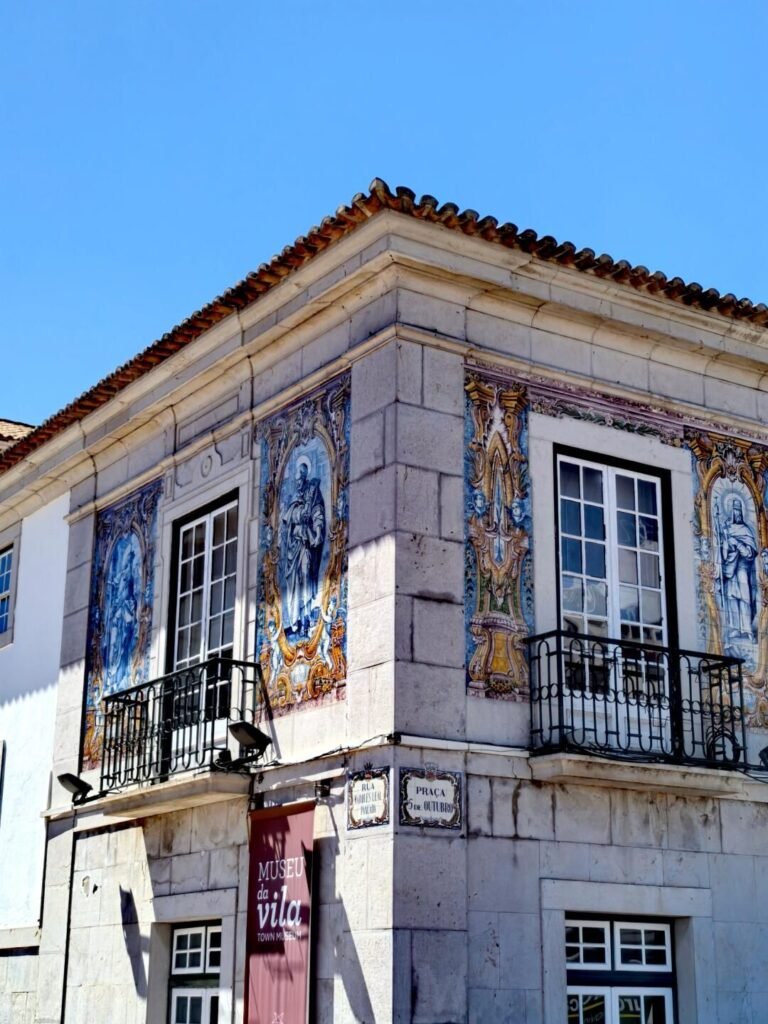
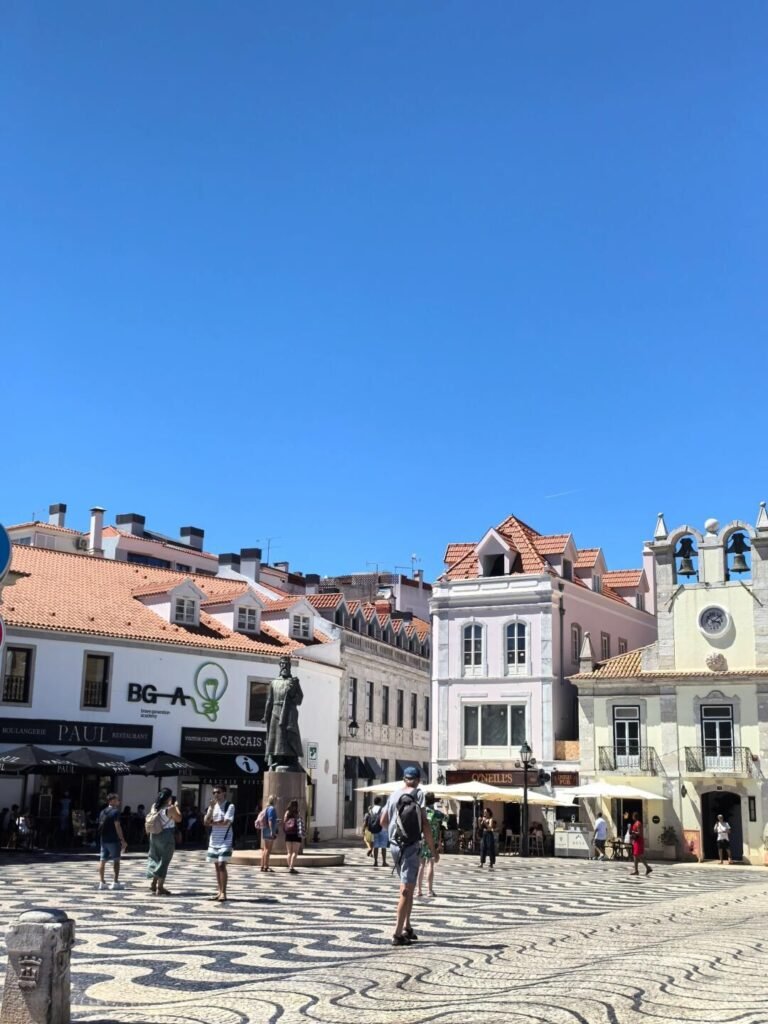
At dinner time, you can enjoy a seafood feast at a high-quality restaurant, savoring fresh catches of the day paired with fine wine while taking in the stunning seaside night views.
Food Experiences
Summer evenings are best spent at outdoor restaurants, enjoying fresh seafood with a view. Don’t miss sardinhas assadas (grilled sardines), a quintessential summer dish in Lisbon, often served at street-side grills during the June festivals.
Go to Lisbon in Autumn (September to November): A Foodie’s Dream
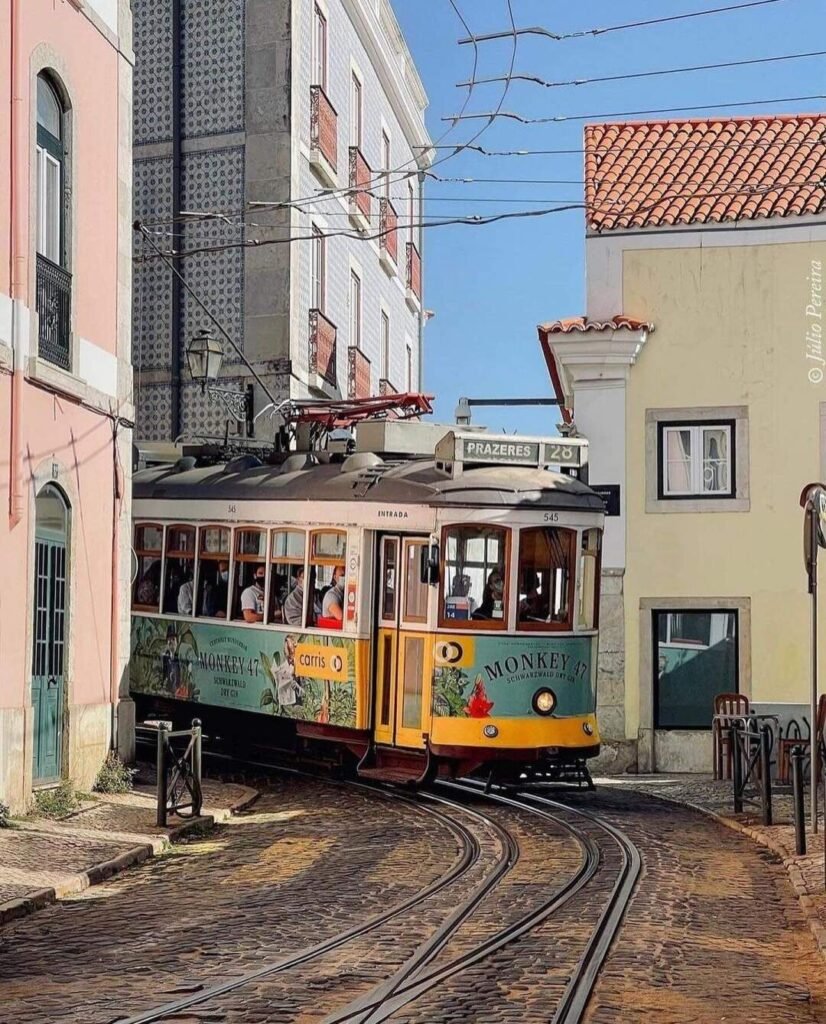
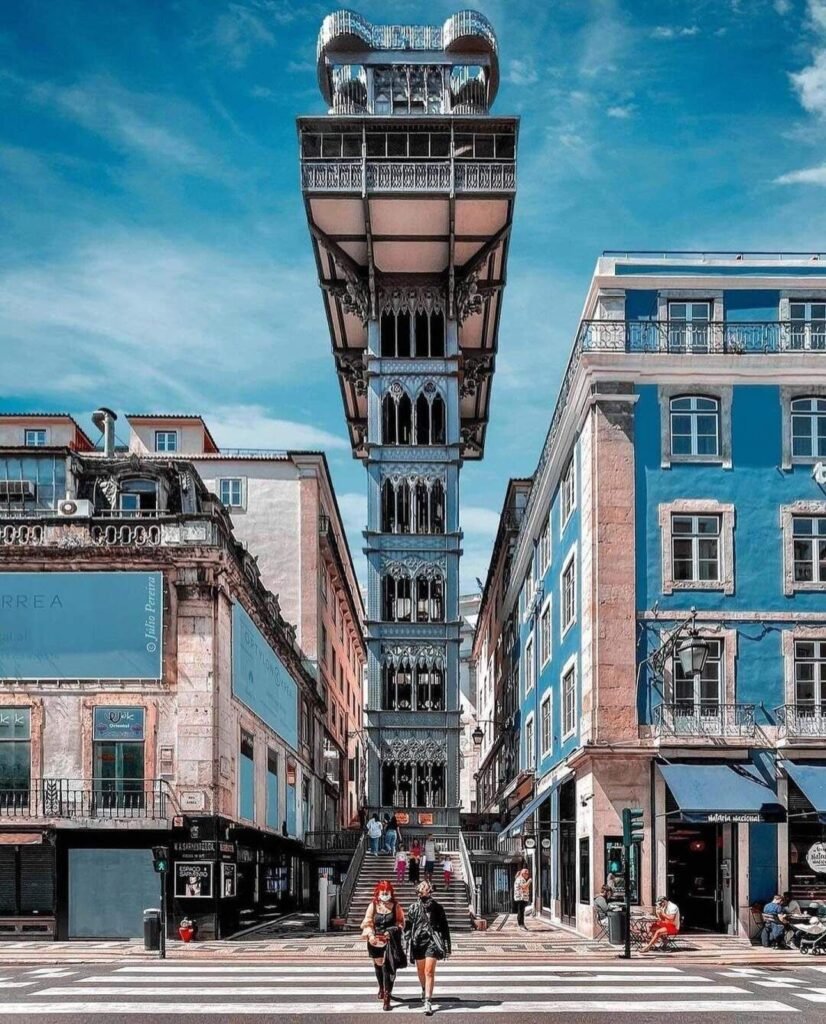
Climate and Scenery
Autumn in Lisbon is mild and golden, with daytime temperatures ranging from 19°C in September to 15°C in November. This season is perfect for enjoying cultural events, wine tastings, and the city’s rich culinary offerings.
Recommended Activities
- Wine and Food Festivals: Autumn is a fantastic time to visit Lisbon for its wine festivals. Don’t miss the St. Martin’s Day Festival in November, where locals celebrate with roasted chestnuts and young wine. Some places will also prepare sausages and other local delicacies, allowing you to immerse yourself in the experience of Portugal’s traditional festivals.
- Take Tram 28: Hop on the historic Tram 28 for a scenic ride through Lisbon’s most iconic neighborhoods, including Alfama, Baixa, and Graça. This is a quintessential Lisbon experience that blends history, culture, and sightseeing.
- Day Trip to Sintra: Venture just outside Lisbon to Sintra, a magical town known for its fairytale-like Palácio da Pena and the historic Castelo dos Mouros. It’s a must-visit during your trip to Portugal.
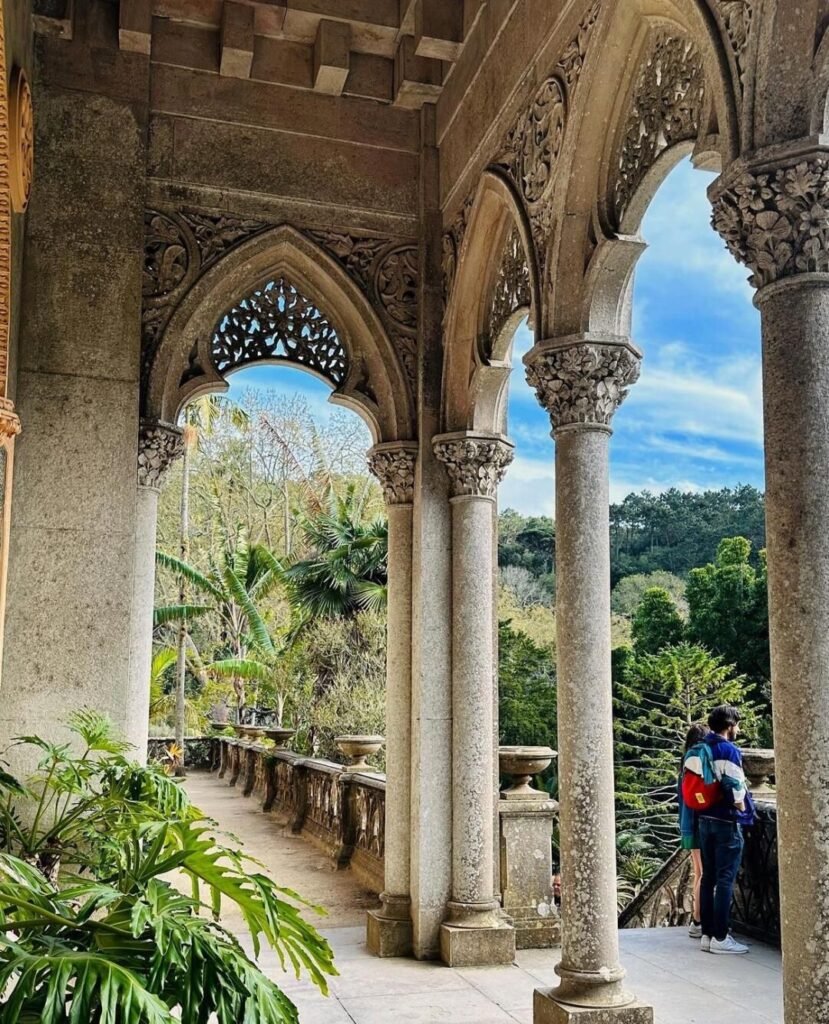
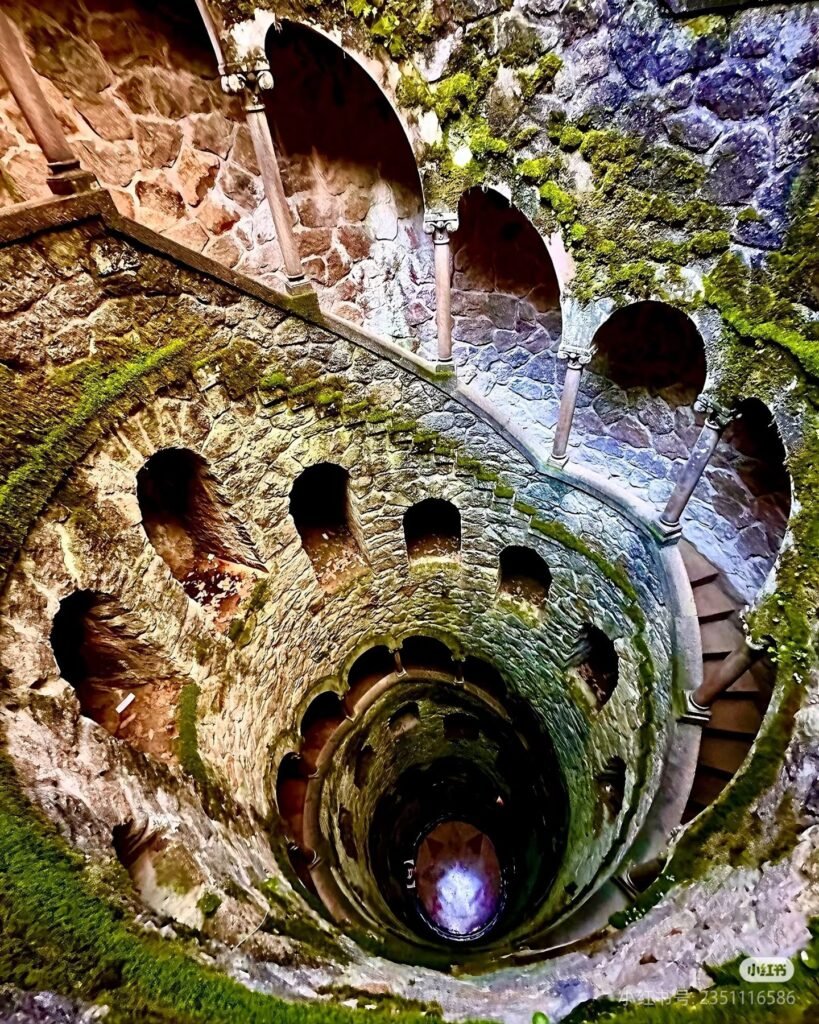
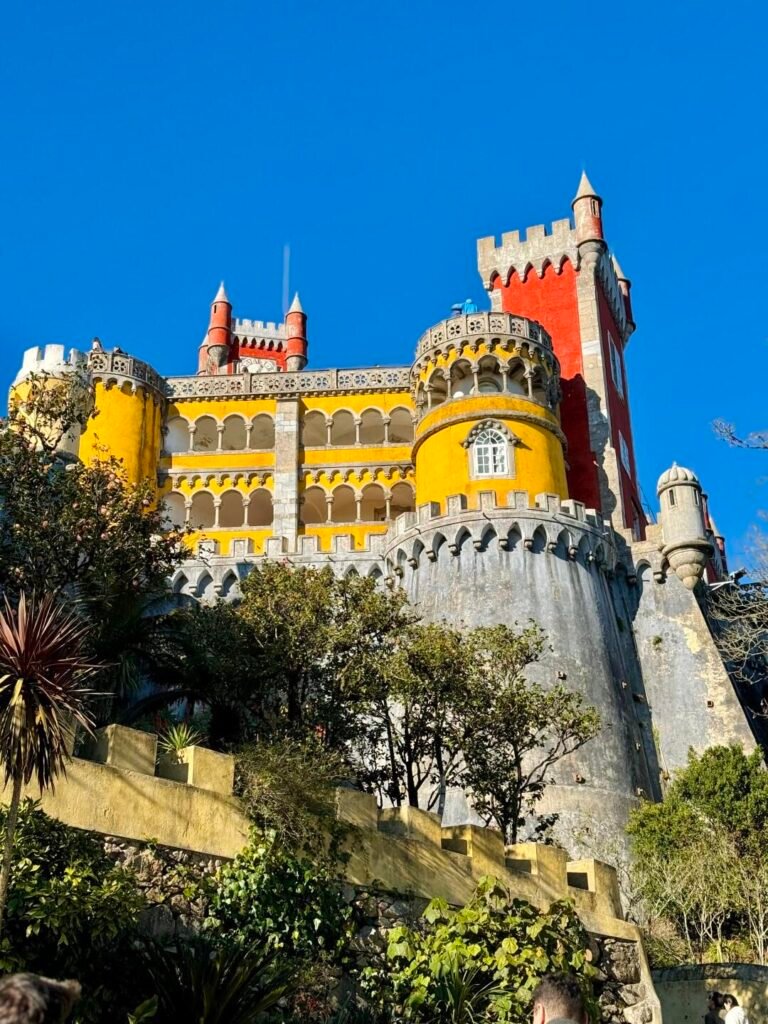
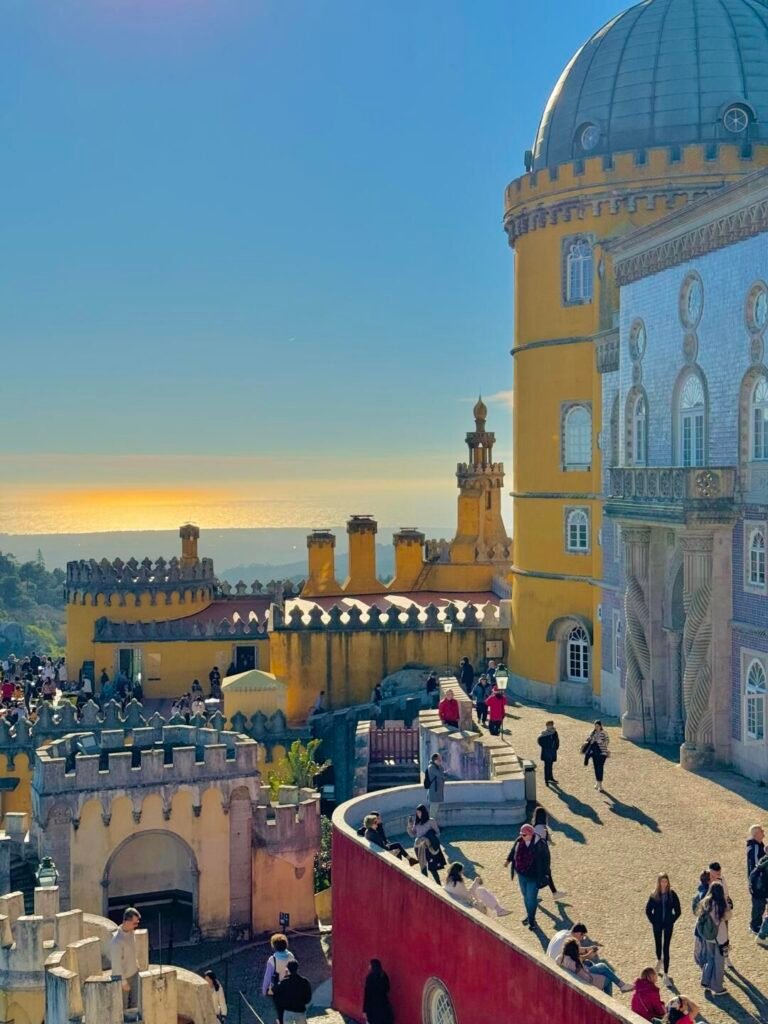
Recommended Cultural Activities
Visiting the Estrela Garden is a wonderful way to enjoy the exclusive autumn scenery, filled with golden yellows, reds, and oranges. It’s an ideal spot for picnics and appreciating the beauty of falling leaves. The garden features small lakes, ponds, and fountains where visitors can relax and observe charming ducks and geese. Additionally, there is a playground, making it a great destination for families, especially children.
Experiencing a Fado show is another excellent cultural activity. The term “Fado” comes from the Latin word for “fate,” and this music often expresses nostalgia for the past, sorrow for loss, and reflections on destiny. It has also been recognized by UNESCO as an intangible cultural heritage. (travel guide to Lisbon)
In Lisbon, many Fado houses offer unique experiences, including performances accompanied by dinner, typically located in the Alfama and Chiado neighborhoods. For example, Mesa de Frades is a renowned Fado venue known for its eclectic lineup of artists and local performers, who often walk between tables during the show to create a truly personal experience for guests. Besides live performances, you can also visit the Museu do Fado, where many walking tours delve into the unique charm of Fado culture.
If you have an extra day, you can opt for a day laid-back stroll to the Belém district, which is a must-do when visiting Lisbon. In terms of food, many wineries will release new wines in the fall, and you can also enjoy traditional desserts.
Food Experiences
Autumn is harvest season, and Lisbon’s markets are brimming with fresh produce and seasonal specialties. Visit Mercado da Ribeira or indulge in seafood dishes like garlic clams and crab at iconic restaurants like Cervejaria Ramiro. Pair your meals with local wines for the ultimate foodie experience.
More about Fado :
Visit Lisbon in Winter (December to February): A Warm European Winter Escape
Climate and Scenery
While winter in Lisbon is cooler, with temperatures ranging from 6°C to 17°C, it’s still much milder than other European cities. The city is adorned with festive lights and Christmas markets, making it a cozy and magical destination during the holiday season.
Recommended Activities
- Holiday Festivities: Visit Lisbon’s Christmas markets in December, such as the Wonderland Lisboa, to shop for handmade gifts and enjoy local treats.
- Explore Indoor Attractions: Winter is the perfect time to discover Lisbon’s museums, such as the National Museum of Ancient Art or the Calouste Gulbenkian Museum.
- City Views: Don’t let the cooler weather keep you indoors—head to Castelo de São Jorge, where you can enjoy sweeping views of the city even in winter.
Food Experiences
Lisbon’s winter cuisine is hearty and comforting. Try caldo verde, a traditional Portuguese soup made with kale, potatoes, and chouriço sausage, or indulge in festive desserts like bolo-rei (king cake). (travel guide to Lisbon)
Conclusion: Travel Guide to Lisbon as Reference
No matter the season, Lisbon offers something unique for every traveler. Whether you’re strolling through blooming gardens in spring, enjoying the festive buzz of summer, savoring wine in autumn, or soaking in the cozy winter atmosphere, Lisbon’s charm is timeless.
Plan your trip to Portugal around your preferred activities and seasonal highlights, and let this travel guide to Lisbon help you create unforgettable memories in one of Europe’s most captivating capitals.
Foodie Must-Visit List of Famous Restaurants in Lisbon
Pastéis de Belém: The original custard tart shop in the world, this iconic establishment is a must-visit for anyone traveling to Lisbon. Indulging in their freshly baked pastéis is an experience you won’t want to miss!
Baía do Peixe – Praça do Comércio: This seafood restaurant offers exceptional value for money. Known for its delicious dishes featuring barnacles, it’s a top spot for seafood lovers looking for an authentic taste of Portugal.
Uma: A beloved spot for traditional Portuguese seafood rice, Uma has been serving up delightful meals for years. I could eat here three times and never get tired of it!
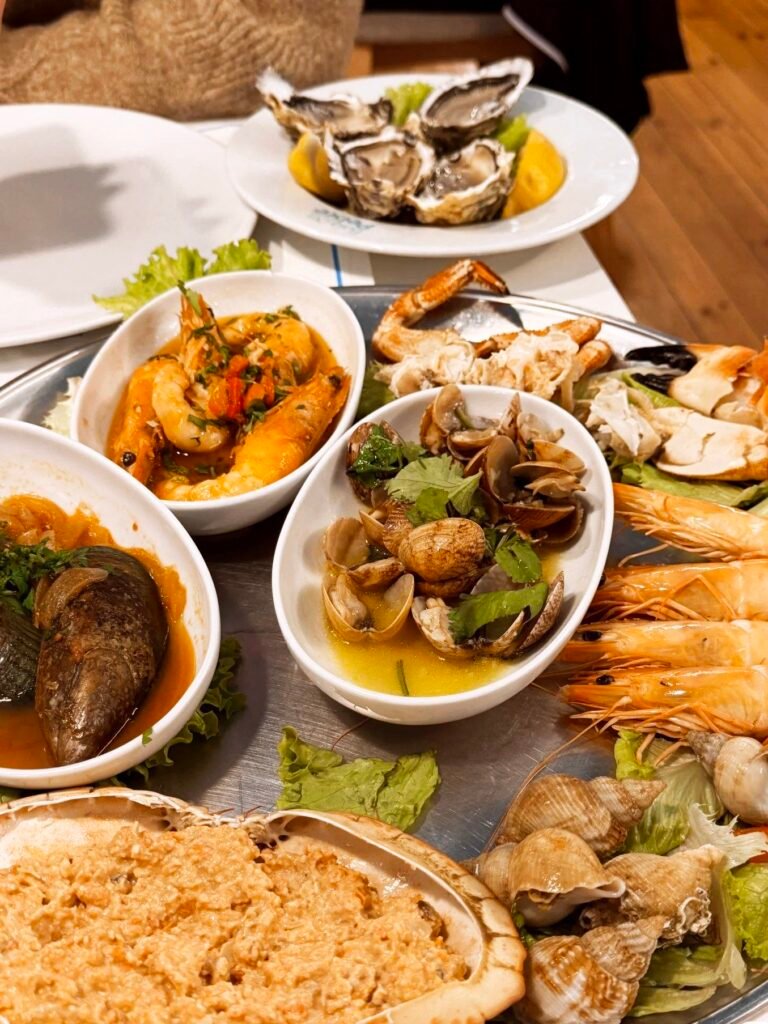
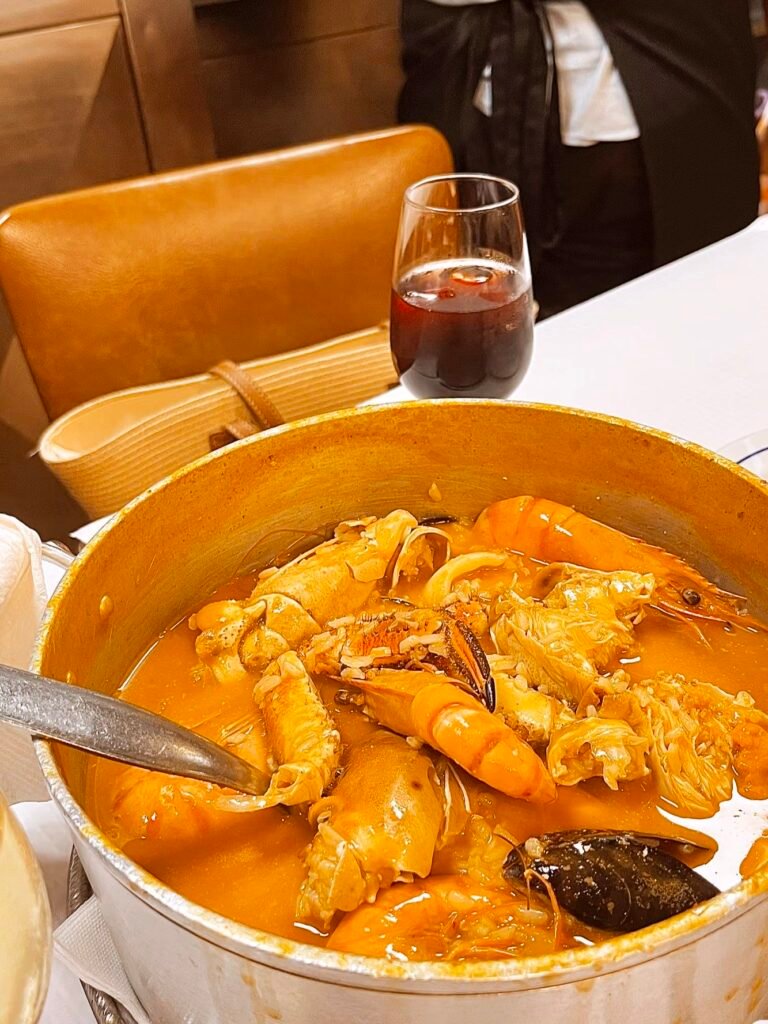

Hotel Accommodation Recommendations
When planning your trip to Portugal, consider staying in the Bairro Alto of Lisbon. It’s conveniently located, making it easy to explore all the city has to offer.
Cost of Traveling Lisbon
Travel on a budget in Lisbon, from $60 − $80 USD per day per person, or better quality for travel in two may cost from $120 − $150 USD a day.
Accommodation in Lisbon is relatively more affordable compared to other European countries, but you can’t overlook the city’s cuisine, which can lead to higher spending at restaurants, but it totally worth it! Walking is the primary mode of transportation, and taking the tram is also quite inexpensive.
Find more travel guides about backpacking in Europe >>